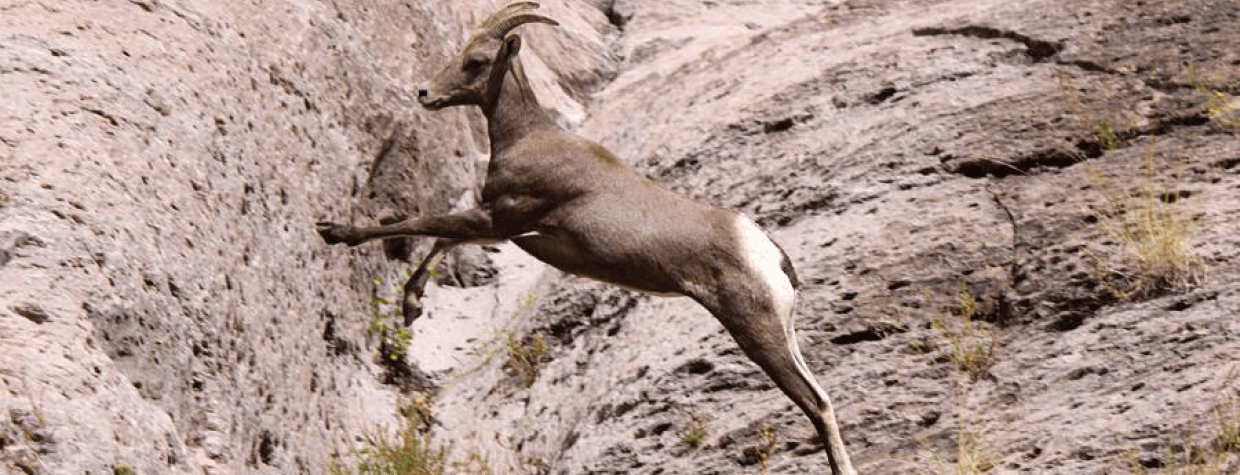Aravaipa Canyon Wilderness
Along with desert bighorn sheep (pictured), twelve known species of bats make their homes in caves and under ledges in Aravaipa Canyon.
Location: Between Globe and Tucson
Established: 1984
Size: 19,410 acres
Managed by: Bureau of Land Management
Contact: Safford Field Office, 928-348-4400 or www.blm.gov/arizona
Baboquivari Peak Wilderness
This wilderness is Arizona’s smallest, but it features solitude and splendid views of its namesake peak. The mountain is the only major peak in the state that requires technical climbing ability to reach the summit, making it a popular rock-climbing destination.
Location: Southwest of Tucson
Established: 1990
Size: 2,040 acres
Managed by: Bureau of Land Management
Contact: Tucson Field Office, 520-258-7200 or www.blm.gov/arizona
Castle Creek Wilderness
Easily accessible from Phoenix or Flagstaff, this wilderness includes granite peaks at higher elevations and saguaros down south. It’s an ideal destination for casual hikers, as it features 30 miles of trails. It gets hot in the summer, though, and water is hard to find. Plan accordingly.
Location: Between Phoenix and Flagstaff
Established: 1984
Size: 25,215 acres
Managed by: U.S. Forest Service
Contact: Bradshaw Ranger District, 928-443-8000 or www.fs.usda.gov/prescott
EDITOR’S NOTE: Each afternoon in September, in honor of the 50th anniversary of the Wilderness Act, we’re spotlighting three of Arizona’s 90 wilderness areas. For more information about any of the state’s wilderness areas, visit Wilderness.net, a collaboration between several wilderness-related organizations. The information here comes from that site and the wilderness areas’ managing agencies. Always contact the managing agency before visiting a wilderness to learn about any restrictions that may be in effect. To see our entire Wild Arizona series, click here.
- Explore
- Photography
- Shop
- Classroom
- Subscriptions

